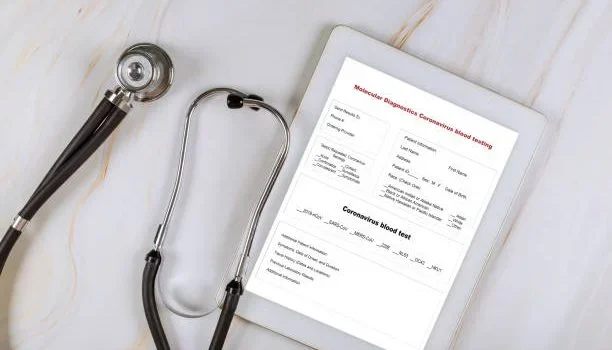Essential Medical Billing Terms
You Need to Know
Are you buried under a pile of paperwork? Struggling with optometry billing issues for medical and vision plans? Need a quick refresher on common insurance terms? We’ve created a glossary of insurance terms and billing tips. These will help you boost collections, prevent denied claims, and increase revenue for your eye care business.
Medical Billing Terms and Descriptions for Billers and Coders
Accounts Receivable (AR):
The remaining amount a patient owes to the provider for services received. If you file claims often and post remits as they arrive, AR should reflect the real value of outstanding claims needing your attention.
Adjudication:
This is when the insurance payer decides how to handle a medical claim. They can accept, deny, or reject it. The process involves the payer checking the medical claim. They decide if the claim is valid and compliant. Then, they determine how much to reimburse the provider.
ABN (Advance Beneficiary Notice of Noncoverage):
This document informs patients they might have to pay if their insurance denies the claim. Patients must fill out and sign the ABN before receiving any services or items not covered by insurance.
Aging Bucket or AR Aging:
This refers to insurance claims that are unpaid or patient balances that are overdue by more than 30 days.
Allowed Amount:
This is the highest amount an insurance company will let a provider charge for a covered healthcare service. This amount might be paid by insurance, the patient, or shared between them.
Applied to Deductible (ATD):
This is the amount the patient pays first. After this, the insurance begin to cover costs.You’ll usually see this on the patient’s insurance statement.


Assignment of Benefits (AOB):
This means that insurance payments go straight to the provider for their services.
Authorization:
means a patient must get permission from their insurance before specific treatments or services.
Authorization Number:
This number shows that the patient’s insurance plan has approved the treatment or service.
Bundling (or Code Bundling):
This occurs when two or more healthcare services share one billing code.
Claim Adjustment Reason Codes (CARCs):
Explain why payments change. They show why a claim or service line was paid differently from what was billed.
Charge Entry:
This is where you enter the correct medical billing details. You also assign diagnosis and procedure codes to submit a medical claim.
Clearinghouse:
A middleman that sends and receives secure, HIPAA-compliant electronic medical claims. It regularly sends financial data from eye care providers to payers in batches. Payers include Medicare, Medicaid, Managed Care, private insurance companies, and other third-party providers.
Claim Adjustment Group Codes:
These codes have two letters. They show who is responsible for a claim adjustment in the Explanation of Benefits (EOB) or Electronic Remittance Advice (ERA). These group codes have a claim adjustment reason code. This code is either numeric or alpha-numeric. It shows why a claim or service line was paid differently than billed.
Claim Scrubbing:
This process makes sure medical claims are clean and error-free before they are submitted.
CMS-1500 02/12 Form:
This is a CMS medical claim form. It’s used to submit claims to insurance payers. Its red ink distinguishes the form. It’s sometimes called a HCFA form, which stands for Health Care Financing Administration.


Coordination of Benefits:
When a patient has multiple insurance plans, one is primary and the other is secondary.
Co-insurance:
This is the percentage a patient pays to the healthcare provider after insurance covers its part. This amount depends on the patient’s benefit contract. Oftentimes, the patient must meet their deductible before coinsurance kicks in.
Co-payment (Co-pay):
This is a set fee that patients pay to their healthcare provider for services or treatment.
Credentialing:
Sometimes called medical provider credentialing. Credentialing means collecting and verifying a doctor’s credentials. This includes their professional background and education history. Credentialing checks that providers have the right licenses, certifications, and skills to care for patients. Insurance plan credentialing is often referred to as “getting on insurance panels.”
Current Procedural Terminology (CPT®) Code: CPT® codes started in 1966. The American Medical Association made these to explain the medical, surgical, or diagnostic procedures done by doctors and healthcare providers.CPT® codes keep medical billing standardized and are essential for insurance claims. Each year, the AMA updates the CPT® code set with changes.
CPT® codes come from the AMA. They include five-digit codes and two-character modifiers. These codes describe different procedures and any changes made to them. Most codes are numbers, but some include letters too. A few might even have an extra letter at the end, like A, F, T, or U.
Date of Service (DOS):
The treatment date. Diagnosis Code (ICD-10): The ICD-10-CM code describes patient conditions and diagnoses. In contrast, the ICD-10-PCS code details inpatient procedures. A diagnosis code tells the insurance payer why you performed the service.
Denied Claim: A denied claim is one that has gone through the adjudication system. The insurance company or third-party payer received and processed it. However, even though a payer denies a claim, you can still appeal the claim as that doesn’t mean it’s not payable.
Electronic Claim 837P (Professional) Transaction:
A standard format used to send healthcare claims electronically.
Effective Date:
when an insurance coverage plan officially starts.
EDI Enrollment:
joining a clearinghouse and/or certain payers in order to submit electronic claims. When you set up a billing system, you have to enroll with your clearinghouse. Each clearinghouse has its own submitter and receiver ID. This lets you send and receive remittances linked to your tax ID. Before you submit claims to payers like Medicare and Medicaid, first provide enrollment documents.
Electronic Data Interchange (EDI):
This is the highest amount an insurance company will let a provider charge for a covered healthcare service. This amount might be paid by insurance, the patient, or shared between them.
Electronic Funds Transfer (EFT):
Insurance claims go straight to your bank account, just like direct deposit. To keep up with provider network rules, more insurance companies now require providers to accept EFT payments.


Electronic Remittance Advice (ERA):
Is an electronic transaction. It uses electronic data interchange (EDI) to share claim information.ERAs are commonly used to automatically upload claim payments into the billing system.
Eligibility and Verification:
Confirms the insurance data is accurate. It also helps figure out what a patient might owe, like co-pays, co-insurance, and deductibles. Giving your patients better cost estimates can greatly increase their satisfaction. It can also help you avoid claim denials in the future.
E/M Codes:
These CPT® codes bill for services by doctors or healthcare providers. They describe patient visits in different categories. These medical codes are for visits and services that focus on “evaluating and managing” patient health. They apply to both new and established patients.E/M coding is based on three main parts: the patient’s history, the medical decision-making process (MDM), and the physical examination.
Global Period:
The recovery time after surgery can vary. It might not require any follow-up days, it could involve a 10-day or 90-day period, depending procedure.
Explanation of Benefits (EOB)
An Explanation of Benefits (EOB) is a document your insurance provider sends you. It comes after they process a claim from the provider. The EOB shows the total charges (billed amount), allowed amount, non-covered charges, and the payment to the provider. It also includes any co-pay, co-insurance, and deductibles the patient pays.
Fee Schedule:
A fee schedule is part of the provider’s contract with the insurance company (except Medicare and Medicaid). It shows the allowed amount the insurance will pay for the provider’s services.

Guarantor:
The person responsible for paying the bill. Also known as the responsible party.
Healthcare Common Procedure Coding System (HCPCS) Codes: HCPCS uses a five-character, alpha-numeric code. These codes help bill Medicare and Medicaid patients. They match services, procedures, and equipment that CPT® codes do not cover.The Centers for Medicare and Medicaid Services (CMS) oversees HCPCS billing codes. These codes use modifiers to give extra details for handling claims. HCPCS codes are divided into two groups: Level I and Level II
HIPAA: a federal law that has been in place since 1996.HIPAA stands for the Health Insurance Portability and Accountability Act. It ensures that health information is kept private, accurate, and accessible when needed. These three key goals are confidentiality, integrity, and availability. HIPAA keeps personal health information (PHI) private. It ensures electronic and physical security for health data and PHI. Also, it makes billing and other electronic transactions easier.
ICD-10 Codes:
International Classification of Diseases Tenth Revision. ICD-10-CM is a medical code for patient conditions and diagnoses. In contrast, ICD-10-PCS is for inpatient procedures. A diagnosis code explains to the insurance company the reason for the medical service provided.
Local Coverage Determination (LCD):
Refers to guidelines set by a Medicare Administrative Contractor (MAC) that decide what services are covered. Certain codes may be governed by LCDs. Regularly reviewing LCDs is key. It helps make sure your claims are complete and correct. This way, you can avoid payment delays.
Medicare Administrative Contractor (MAC):
A MAC is a private insurer. They handle claims for Medicare beneficiaries.
Medicare Advantage Plans:
These are also called Medicare Part C, providing an “all in one” choice. This is different from traditional Medicare. Private insurance companies offer these plans.
Medicare Beneficiary Identifier (MBI):
The MBI is an 11-character code made of letters and numbers on the Medicare card. It replaces the patient’s Social Security Number (SSN)-based Health Insurance Claim Number (HICN).


Medically Necessary:
Medicare says these are services or supplies needed to diagnose or treat an illness, injury, condition, disease, or its symptoms. These must meet accepted medical standards.
Modifiers:
Modifiers are extra details added to HCPCS or CPT® codes to provide more information. They give extra details needed to process a claim. Modifiers show why a doctor or qualified healthcare professional gave a specific service or procedure.
NCCI Edits:
NCCI edits prevent bundling or unbundling errors from using CPT® codes and HCPCS billing codes wrongly. They also prevent the mixing of wrong code combinations.
National Coverage Determination (NCD):
NCD decides if Medicare will cover a service or item.
National Provider Identifier (NPI):
This is a unique 10-digit ID number for healthcare providers. It is required by HIPAA. This number is given out by the National Plan and Provider Enumeration System, or NPPES for short.
Place of Service (POS):
A two-digit number that shows the place where services were provided.
Pre-Certification Number:
The insurance company gives a pre-certification number. This shows that patient services and treatment are approved. But, it does not guarantee payment.
Prior Authorization Number:
This is a number given by the insurance payer for certain services. Before submitting a claim, double-check that the prior authorization and referral numbers are accurate.
Provider Enrollment:
This is how a provider signs up for commercial or government health insurance plans. Once enrolled, the provider can get paid for the services they provide to patients. Once you sign up for the insurance plan, the provider becomes part of the “in-network” group.”
Remittance Advice Remark Codes (RARCs):
Explain changes that a Claim Adjustment Reason Code has noted. They also share information about how remittances are processed.

Rejected Claim:
A claim that has not been processed by a clearinghouse, insurance payer, or CMS. The claim is not seen as “received.” It also did not pass the adjudication process.
Retinal Health Screening/Imaging Consent Form: Most vision plans, medical insurance, and Medicare don’t cover retinal images. Many offices ask patients to sign a Retinal Imaging Consent Form. This form shows that patients are responsible for this part of their eye exam.
Revenue Cycle Management (RCM) is a financial process.
It includes:
- Provider credentialing
- Enrollment
- Eligibility checks
- Benefits verification
- Claims processing
- Payment posting
- Revenue generation
RCM and optometric billing services team up with your medical clearinghouse. This helps simplify administrative and clinical tasks. As a result, you can capture, manage, and collect patient service revenue more easily.

Secondary Insurance:
This is a patient’s extra insurance. It helps cover some deductibles, co-pays, and co-insurances after the primary insurance pays.
Superbill:
A document from healthcare providers that details the services a patient received. The healthcare provider sends the Superbill to payers for payment. This can be done using a paper or electronic claim.
Tax Identification Number (TIN):
A nine-digit number from the IRS. Individuals and businesses use it to file taxes. A TIN, also known as an Employer Identification Number (EIN), is the unique identifier used for your eye care practice..
Telehealth:
Remote non-clinical services.
Telemedicine:
Remote clinical services.
Term Date:
The date when the insurance contract ends or when the coverage for a subscriber or their dependent stops.
Third-Party Administrator (TPA) : A company that manages insurance claims for healthcare providers.
Third-Party Payer : This is an entity that pays medical claims for the insured. It can be an insurance company, a government agency, an HMO, or an employer.
Type of Service (TOS):
This explains the type of service provided.
Unbundling: When healthcare providers bill multiple CPT codes for a treatment, even though only one code is needed.
Usual, Customary, and Reasonable (UCR) Charges are the standard amounts an insurance company pays after you file a claim. UCR, which varies by location and service, is the maximum amount most providers can charge for certain medical services.
Write-Off or Adjustment Amount: This refers to the portion of a charge that has been removed or adjusted, reducing the total amount owed. This usually means any amount over what the insurance allows. It can also include adjustments like penalties or Medicare sequestration. If you’re part of an insurance network, you can’t charge patients for any write-offs or adjustments.
Discover the real benefits of outsourcing your eye care billing and see how it can boost your profits. Coders know CPT® and ICD-10 coding well. They handle billing with code modifiers and understand electronic data interchange (EDI) processes. They follow industry standards and ensure 100% HIPAA compliance.

